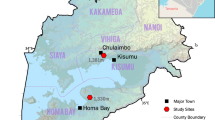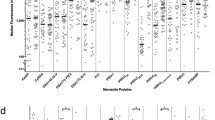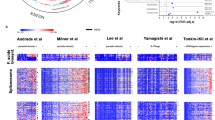Abstract
The dry season is a major challenge for Plasmodium falciparum parasites in many malaria endemic regions, where water availability limits mosquito vectors to only part of the year. How P. falciparum bridges two transmission seasons months apart, without being cleared by the human host or compromising host survival, is poorly understood. Here we show that low levels of P. falciparum parasites persist in the blood of asymptomatic Malian individuals during the 5- to 6-month dry season, rarely causing symptoms and minimally affecting the host immune response. Parasites isolated during the dry season are transcriptionally distinct from those of individuals with febrile malaria in the transmission season, coinciding with longer circulation within each replicative cycle of parasitized erythrocytes without adhering to the vascular endothelium. Low parasite levels during the dry season are not due to impaired replication but rather to increased splenic clearance of longer-circulating infected erythrocytes, which likely maintain parasitemias below clinical and immunological radar. We propose that P. falciparum virulence in areas of seasonal malaria transmission is regulated so that the parasite decreases its endothelial binding capacity, allowing increased splenic clearance and enabling several months of subclinical parasite persistence.






Similar content being viewed by others
Data availability
RNA-seq data (normalized counts data and raw sequencing reads) have been deposited in the National Center of Biotechnology Information’s Gene Expression Omnibus (GEO) and are accessible through GEO Series accession number GSE148125.
Metabolomics data are available at the National Institutes of Health (NIH) Common Fund’s National Metabolomics Data Repository website, the Metabolomics Workbench, https://www.metabolomicsworkbench.org, where it has been assigned project ID PR000948. The data can be accessed directly via https://doi.org/10.21228/M8540T. This work is supported by NIH grant U2C-DK119886.
The data file of assembled var gene fragments of all isolates is available at https://github.com/ThomasDOtto/varDB/tree/master/Otherdatasets/Andrade_DryWet2020
Change history
04 August 2022
A Correction to this paper has been published: https://doi.org/10.1038/s41591-022-01947-4
References
World Health Organization. World malaria report 2019 https://www.who.int/malaria/publications/world-malaria-report-2019/en/ (2019).
Hommel, M., David, P. H. & Oligino, L. D. Surface alterations of erythrocytes in Plasmodium falciparum malaria. Antigenic variation, antigenic diversity, and the role of the spleen. J. Exp. Med. 157, 1137–1148 (1983).
Roberts, D. J. et al. Rapid switching to multiple antigenic and adhesive phenotypes in malaria. Nature 357, 689–692 (1992).
Bozdech, Z. et al. The transcriptome of the intraerythrocytic developmental cycle of Plasmodium falciparum. PLoS Biol. 1, E5 (2003).
Howick, V. M. et al. The Malaria Cell Atlas: single parasite transcriptomes across the complete Plasmodium life cycle. Science 365, eaaw2619 (2019).
Marti, M., Good, R. T., Rug, M., Knuepfer, E. & Cowman, A. F. Targeting malaria virulence and remodeling proteins to the host erythrocyte. Science 306, 1930–1933 (2004).
Crabb, B. S. et al. Targeted gene disruption shows that knobs enable malaria-infected red cells to cytoadhere under physiological shear stress. Cell 89, 287–296 (1997).
Oh, S. S. et al. Plasmodium falciparum erythrocyte membrane protein 1 is anchored to the actin-spectrin junction and knob-associated histidine-rich protein in the erythrocyte skeleton. Mol. Biochem. Parasitol. 108, 237–247 (2000).
Lavstsen, T. et al. Plasmodium falciparum erythrocyte membrane protein 1 domain cassettes 8 and 13 are associated with severe malaria in children. Proc. Natl Acad. Sci. USA 109, E1791–E1800 (2012).
Lehmann, T. et al. Aestivation of the African malaria mosquito, Anopheles gambiae in the Sahel. Am. J. Trop. Med. Hyg. 83, 601–606 (2010).
Babiker, H. A., Abdel-Muhsin, A. M., Ranford-Cartwright, L. C., Satti, G. & Walliker, D. Characteristics of Plasmodium falciparum parasites that survive the lengthy dry season in eastern Sudan where malaria transmission is markedly seasonal. Am. J. Trop. Med. Hyg. 59, 582–590 (1998).
Ouedraogo, A. L. et al. Dynamics of the human infectious reservoir for malaria determined by mosquito feeding assays and ultrasensitive malaria diagnosis in Burkina Faso. J. Infect. Dis. 213, 90–99 (2016).
Portugal, S. et al. Treatment of chronic asymptomatic Plasmodium falciparum infection does not increase the risk of clinical malaria upon reinfection. Clin. Infect. Dis. 64, 645–653 (2017).
Kimenyi, K. M., Wamae, K. & Ochola-Oyier, L. I. Understanding P. falciparum asymptomatic infections: a proposition for a transcriptomic approach. Front. Immunol. 10, 2398 (2019).
O’Donnell, A. et al. The acute phase response in children with mild and severe malaria in Papua New Guinea. Trans. R. Soc. Trop. Med. Hyg. 103, 679–686 (2009).
Park, G. S., Ireland, K. F., Opoka, R. O. & John, C. C. Evidence of endothelial activation in asymptomatic Plasmodium falciparum parasitemia and effect of blood group on levels of von Willebrand factor in malaria. J. Pediatr. Infect. Dis. Soc. 1, 16–25 (2012).
Burte, F. et al. Circulatory hepcidin is associated with the anti-inflammatory response but not with iron or anemic status in childhood malaria. Blood 121, 3016–3022 (2013).
Weinberg, J. B. et al. Monocyte polarization in children with falciparum malaria: relationship to nitric oxide insufficiency and disease severity. Sci. Rep. 6, 29151 (2016).
Oyegue-Liabagui, S. L. et al. Pro- and anti-inflammatory cytokines in children with malaria in Franceville, Gabon. Am. J. Clin. Exp. Immunol. 6, 9–20 (2017).
Lyke, K. E. et al. Serum levels of the proinflammatory cytokines interleukin-1β (IL-1β), IL-6, IL-8, IL-10, tumor necrosis factor ɑ, and IL-12(p70) in Malian children with severe Plasmodium falciparum malaria and matched uncomplicated malaria or healthy controls. Infect. Immun. 72, 5630–5637 (2004).
Hopp, C. S. et al. Plasmodium falciparum-specific IgM B cells dominate in children, expand with malaria and produce parasite inhibitory IgM. Preprint at https://www.biorxiv.org/content/10.1101/2020.04.12.030049v2 (2020).
Lavstsen, T., Salanti, A., Jensen, A. T., Arnot, D. E. & Theander, T. G. Sub-grouping of Plasmodium falciparum 3D7 var genes based on sequence analysis of coding and non-coding regions. Malar. J. 2, 27 (2003).
Cowman, A. F., Berry, D. & Baum, J. The cellular and molecular basis for malaria parasite invasion of the human red blood cell. J. Cell Biol. 198, 961–971 (2012).
Snounou, G. et al. Biased distribution of msp1 and msp2 allelic variants in Plasmodium falciparum populations in Thailand. Trans. R. Soc. Trop. Med. Hyg. 93, 369–374 (1999).
Liljander, A. et al. Optimization and validation of multi-coloured capillary electrophoresis for genotyping of Plasmodium falciparum merozoite surface proteins (msp1 and 2). Malar. J. 8, 78 (2009).
Daily, J. P. et al. Distinct physiological states of Plasmodium falciparum in malaria-infected patients. Nature 450, 1091–1095 (2007).
Rono, M. K. et al. Adaptation of Plasmodium falciparum to its transmission environment. Nat. Ecol. Evol. 2, 377–387 (2018).
Lemieux, J. E. et al. Statistical estimation of cell-cycle progression and lineage commitment in Plasmodium falciparum reveals a homogeneous pattern of transcription in ex vivo culture. Proc. Natl Acad. Sci. USA 106, 7559–7564 (2009).
Deplaine, G. et al. The sensing of poorly deformable red blood cells by the human spleen can be mimicked in vitro. Blood 117, e88–e95 (2011).
Dahlback, M. et al. Changes in var gene mRNA levels during erythrocytic development in two phenotypically distinct Plasmodium falciparum parasites. Malar. J. 6, 78 (2007).
Otto, T. D. et al. Evolutionary analysis of the most polymorphic gene family in falciparum malaria. Wellcome Open Res. 4, 193 (2019).
Otto, T. D. et al. Genome sequencing of chimpanzee malaria parasites reveals possible pathways of adaptation to human hosts. Nat. Commun. 5, 4754 (2014).
Sonden, K. et al. Asymptomatic multiclonal Plasmodium falciparum infections carried through the dry season predict protection against subsequent clinical malaria. J. Infect. Dis. 212, 608–616 (2015).
Males, S., Gaye, O. & Garcia, A. Long-term asymptomatic carriage of Plasmodium falciparum protects from malaria attacks: a prospective study among Senegalese children. Clin. Infect. Dis. 46, 516–522 (2008).
Crompton, P. D. et al. Sickle cell trait is associated with a delayed onset of malaria: implications for time-to-event analysis in clinical studies of malaria. J. Infect. Dis. 198, 1265–1275 (2008).
Drakeley, C., Sutherland, C., Bousema, J. T., Sauerwein, R. W. & Targett, G. A. The epidemiology of Plasmodium falciparum gametocytes: weapons of mass dispersion. Trends Parasitol. 22, 424–430 (2006).
Bousema, T. et al. Mosquito feeding assays to determine the infectiousness of naturally infected Plasmodium falciparum gametocyte carriers. PLoS ONE 7, e42821 (2012).
Dicko, A. et al. Season, fever prevalence and pyrogenic threshold for malaria disease definition in an endemic area of Mali. Trop. Med. Int. Health 10, 550–556 (2005).
Smith, T., Schellenberg, J. A. & Hayes, R. Attributable fraction estimates and case definitions for malaria in endemic areas. Stat. Med. 13, 2345–2358 (1994).
Stanisic, D. I., McCarthy, J. S. & Good, M. F. Controlled human malaria infection: applications, advances, and challenges. Infect. Immun. 86, e00479-17 (2018).
Pradeu, T. & Vivier, E. The discontinuity theory of immunity. Sci. Immunol. 1, AAG0479 (2016).
Goncalves, B. P. et al. Examining the human infectious reservoir for Plasmodium falciparum malaria in areas of differing transmission intensity. Nat. Commun. 8, 1133 (2017).
Tran, T. M. et al. An intensive longitudinal cohort study of Malian children and adults reveals no evidence of acquired immunity to Plasmodium falciparum infection. Clin. Infect. Dis. 57, 40–47 (2013).
Crompton, P. D. et al. A prospective analysis of the Ab response to Plasmodium falciparum before and after a malaria season by protein microarray. Proc. Natl Acad. Sci. USA 107, 6958–6963 (2010).
Cham, G. K. et al. Hierarchical, domain type-specific acquisition of antibodies to Plasmodium falciparum erythrocyte membrane protein 1 in Tanzanian children. Infect. Immun. 78, 4653–4659 (2010).
Obeng-Adjei, N. et al. Longitudinal analysis of naturally acquired PfEMP1 CIDR domain variant antibodies identifies associations with malaria protection. JCI Insight 5, e167232 (2020).
Bachmann, A. et al. Controlled human malaria infection with Plasmodium falciparum demonstrates impact of naturally acquired immunity on virulence gene expression. PLoS Pathog. 15, e1007906 (2019).
Tonkin-Hill, G. Q. et al. The Plasmodium falciparum transcriptome in severe malaria reveals altered expression of genes involved in important processes including surface antigen-encoding var genes. PLoS Biol. 16, e2004328 (2018).
Almelli, T. et al. Differences in gene transcriptomic pattern of Plasmodium falciparum in children with cerebral malaria and asymptomatic carriers. PLoS ONE 9, e114401 (2014).
Lee, H. J. et al. Integrated pathogen load and dual transcriptome analysis of systemic host–pathogen interactions in severe malaria. Sci. Transl. Med. 10, eaar3619 (2018).
Deans, A. M. et al. Low multiplication rates of African Plasmodium falciparum isolates and lack of association of multiplication rate and red blood cell selectivity with malaria virulence. Am. J. Trop. Med. Hyg. 74, 554–563 (2006).
Chotivanich, K. et al. Parasite multiplication potential and the severity of falciparum malaria. J. Infect. Dis. 181, 1206–1209 (2000).
Spence, P. J. et al. Vector transmission regulates immune control of Plasmodium virulence. Nature 498, 228–231 (2013).
Brugat, T. et al. Antibody-independent mechanisms regulate the establishment of chronic Plasmodium infection. Nat. Microbiol. 2, 16276 (2017).
Abdi, A. I. et al. Global selection of Plasmodium falciparum virulence antigen expression by host antibodies. Sci. Rep. 6, 19882 (2016).
Weinberger, L. S. A minimal fate-selection switch. Curr. Opin. Cell Biol. 37, 111–118 (2015).
Mancio-Silva, L. et al. Nutrient sensing modulates malaria parasite virulence. Nature 547, 213–216 (2017).
Brancucci, N. M. B. et al. Lysophosphatidylcholine regulates sexual stage differentiation in the human malaria parasite Plasmodium falciparum. Cell 171, 1532–1544 (2017).
Billker, O. et al. Identification of xanthurenic acid as the putative inducer of malaria development in the mosquito. Nature 392, 289–292 (1998).
Cornet, S., Nicot, A., Rivero, A. & Gandon, S. Evolution of plastic transmission strategies in avian malaria. PLoS Pathog. 10, e1004308 (2014).
Auburn, S. et al. An effective method to purify Plasmodium falciparum DNA directly from clinical blood samples for whole genome high-throughput sequencing. PLoS ONE 6, e22213 (2011).
Ratsimbasoa, A. et al. Evaluation of two new immunochromatographic assays for diagnosis of malaria. Am. J. Trop. Med. Hyg. 79, 670–672 (2008).
Trager, W. & Jensen, J. B. Human malaria parasites in continuous culture. Science 193, 673–675 (1976).
Radfar, A. et al. Synchronous culture of Plasmodium falciparum at high parasitemia levels. Nat. Protoc. 4, 1899–1915 (2009).
Boyle, M. J. et al. Isolation of viable Plasmodium falciparum merozoites to define erythrocyte invasion events and advance vaccine and drug development. Proc. Natl Acad. Sci. USA 107, 14378–14383 (2010).
Tonkin, C. J. et al. Localization of organellar proteins in Plasmodium falciparum using a novel set of transfection vectors and a new immunofluorescence fixation method. Mol. Biochem. Parasitol. 137, 13–21 (2004).
Broadbent, K. M. et al. Strand-specific RNA sequencing in Plasmodium falciparum malaria identifies developmentally regulated long non-coding RNA and circular RNA. BMC Genomics 16, 454 (2015).
Kim, D., Langmead, B. & Salzberg, S. L. HISAT: a fast spliced aligner with low memory requirements. Nat. Methods 12, 357–360 (2015).
Anders, S., Pyl, P. T. & Huber, W. HTSeq–a Python framework to work with high-throughput sequencing data. Bioinformatics 31, 166–169 (2015).
Love, M. I., Huber, W. & Anders, S. Moderated estimation of fold change and dispersion for RNA-seq data with DESeq2. Genome Biol. 15, 550 (2014).
Huang da, W., Sherman, B. T. & Lempicki, R. A. Systematic and integrative analysis of large gene lists using DAVID bioinformatics resources. Nat. Protoc. 4, 44–57 (2009).
Virtaneva, K. et al. Longitudinal analysis of the group A Streptococcus transcriptome in experimental pharyngitis in cynomolgus macaques. Proc. Natl Acad. Sci. USA 102, 9014–9019 (2005).
Schalkwijk, J. et al. Antimalarial pantothenamide metabolites target acetyl-coenzyme A biosynthesis in Plasmodium falciparum. Sci. Transl. Med. 11, eaas9917 (2019).
Cajka, T. & Fiehn, O. Increasing lipidomic coverage by selecting optimal mobile-phase modifiers in LC–MS of blood plasma. Metabolomics 12, 34 (2016).
Allman, E. L., Painter, H. J., Samra, J., Carrasquilla, M. & Llinas, M. Metabolomic profiling of the malaria box reveals antimalarial target pathways. Antimicrob. Agents Chemother. 60, 6635–6649 (2016).
Tsugawa, H. et al. MS-DIAL: data-independent MS/MS deconvolution for comprehensive metabolome analysis. Nat. Methods 12, 523–526 (2015).
Li, H. Aligning sequence reads, clone sequences and assembly contigs with BWA-MEM. Preprint at https://arxiv.org/abs/1303.3997 (2013).
Marcais, G., Yorke, J. A. & Zimin, A. QuorUM: an error corrector for Illumina reads. PLoS ONE 10, e0130821 (2015).
Martin, M. Cutadapt removes adapter sequences from high-throughput sequencing reads. EMBnet J. 17, 10–12 (2011).
Zerbino, D. R. in Current Protocols in Bioinformatics (ed Baxevanis, A. D.) (John Wiley and Sons, 2010).
Rask, T. S., Hansen, D. A., Theander, T. G., Gorm Pedersen, A. & Lavstsen, T. Plasmodium falciparum erythrocyte membrane protein 1 diversity in seven genomes–divide and conquer. PLoS Comput. Biol. 6, e1000933 (2010).
Otto, T. D. et al. Long read assemblies of geographically dispersed Plasmodium falciparum isolates reveal highly structured subtelomeres. Wellcome Open Res. 3, 52 (2018).
Acknowledgements
We thank the residents of Kalifabougou, Mali, for participating in this study. We acknowledge the support of the Flow Cytometry Core Facility of DKFZ in Heidelberg, Germany, and the Immunology Core Lab of the UCRC in Bamako, Mali. We thank the Metabolomics Core Facility at Penn State University and A. Patterson and P. Smith from the Penn State Metabolomics Core. We thank Z. Bozdech and the lab at Nanyang Technological University, Singapore, for help and expertise with RNA extraction. This work was supported by the German Center for Infection Research (DZIF), the European Research Council under the European Union’s Horizon 2020 Research and Innovation Programme (grant agreement 759534), the Deutsche Forschungsgemeinschaft (DFG, German Research Foundation) projektnummer240245660 SFB 1129 of the German Research Foundation and the Division of Intramural Research, National Institute of Allergy and Infectious Diseases, of the National Institutes of Health. R.T.L. was funded by the European Union’s Horizon 2020 Research and Innovation Programme under Marie Skłodowska-Curie grant agreement DLV-839998.
Author information
Authors and Affiliations
Contributions
C.M.A, H.F., R.T.-L., N.F.L., C.A., J.H., C.S.H., S.L., M.N., H.C., D.S., C.M., S.R., K.V., M.V.H., E.L.A. and S.P. performed experiments and analyzed data. S.D., D.D., K.K., A.O., B.T. and P.D.C. designed, conducted and supervised field work generating the clinical data and samples. J.M., N.O.S. and T.D.O. performed bioinformatic analysis. M.-E.N., C.L., T.L., M.A., A.F. and M.L. provided technical expertise, and T.L. and L.T. provided essential reagents. M.R. performed mathematical models. T.M.T., J.S. and V.W. provided statistics expertise. C.M.A. prepared figures, and C.M.A., H.F., R.T.-L., T.M.T., N.S.O. and T.D.O. helped prepare the manuscript. T.M.T., A.F., M.L., T.L., T.D.O., M.R. and P.D.C. provided insightful comments to the manuscript. P.D.C. discussed initial field and study designs. S.P. designed the study and wrote the manuscript. All authors read and approved the final manuscript.
Corresponding author
Ethics declarations
Competing interests
The authors declare no competing interests.
Additional information
Peer review information Alison Farrell is the primary editor on this article and managed its editorial process and peer review in collaboration with the rest of the editorial team.
Publisher’s note Springer Nature remains neutral with regard to jurisdictional claims in published maps and institutional affiliations.
Extended data
Extended Data Fig. 1
Characteristics of study participants stratified by year.
Extended Data Fig. 2 Parasite density of malaria cases during dry and transmission seasons.
Parasite density detected by microscopy on thick blood smear of 17 individuals that presented malaria cases both in the dry season (January to May, MALdry) and in the ensuing wet season (June to December, MALwet) in the years on 2017 and 2018. Parasitaemia data shows median ± IQR, two-tailed Mann-Whitney test.
Extended Data Fig. 3 Flow cytometry gating strategies.
a, Major leucocyte populations from frozen and fresh PBMCs (Surface staining) and fresh PBMCs intracellular content (Intracellular staining). b, P. falciparum-specific memory B cells in frozen PBMCs at the end of the dry season of children with or without subclinical P. falciparum infection.
Extended Data Fig. 4 Immune responses to P. falciparum during the dry season.
a, Proportions of NK subpopulations defined by CD56 and CD16 in children carrying (May+) or not (May−) P. falciparum at the end of the dry season. Median ± IQR; One sided Dunn’s Kruskal-Wallis Multiple Comparisons test. b, Proportion of P. falciparum-specific IgG+ MBCs in classical, activated or atypical MBCs of P. falciparum carriers (May+) or uninfected individuals (May−) at the end of the dry season. Median ± IQR; One sided Dunn’s Kruskal-Wallis Multiple Comparisons test. c, Proportion of children with antibodies specific to PfEMP1 domains binding to unknown receptors at the beginning (Jan) and end (May) of the dry season (n=106 Jan and May−, 112 Jan and May+). Boxplots indicate median ± IQR. Values >1.5 times the IQR are plotted as individual points (Tukey method), RM one-way ANOVA (with Greenhouse-Geisser correction). d, Magnitude of IgG antibodies against PfEMP1 domains of B/A subtype between the beginning and end of the dry season in children carrying (May+) or not (May−) subclinical P. falciparum infection at the end of the dry season (n=106 Jan and May−, 112 Jan and May+) e, Breadth (left) and magnitude (right) of IgG reactivity to invasion-related antigens (Supplementary Table 11) at the end of the dry season in non-infected and subclinical children carrying P. falciparum (n=143 May−, 139 May+). Individual antigen reactivity (detailed in Portugal et al.13) of invasion-related antigens based on Cowman et al.23. Breadth is the number of antigens to which the level of IgG reactivity exceeds 2 SDs above the no DNA control. Magnitude is the sum of log2 -IgG intensity values for all antigens per sample. Boxplots indicate median ± IQR, Tukey method, two-tailed Mann-Whitney test. f, P. falciparum invasion ratio between merozoite invasion in antibody depleted plasma and merozoite invasion in paired complete plasma from subclinical carriers and non-infected children (n=28 May+, 23 May−), and malaria-naïve control (German adults’ plasma, n=9). One sided Dunn’s Kruskal-Wallis Multiple Comparisons test.
Extended Data Fig. 5 Volcano plots comparing the DEGs found in this study with the DEGs reported in two other studies26,27.
a, 141 DEGs previous reported in the comparison of transcriptomes of severe vs moderate malaria parasite physiological states were matched to the present study. 69 were not DEG in the dry season, 67 were upregulated and 5 were downregulated. b, 306 DEGs previous reported in the comparison of high vs low transmission clinical malaria causing parasites were matched to the present study. 182 were not DEGs in the dry season, 103 were upregulated and 21 were downregulated. DEGs found in this study are highlighted in yellow. Dots in blue represent the transcripts up-regulated (1131) and in red the transcripts down-regulated (476) in the dry season compared to clinical malaria samples.
Extended Data Fig. 6 Expression patterns in 3D7 parasites along the ~48 h intraerythrocytic developmental cycle (defined by Bozdech et al. PLoS Biology, 2003) of DEGs between P. falciparum of asymptomatic carriers at the end of the dry season (May) and at the first clinical malaria case (MAL) in the ensuing transmission season.
a, Glycerophospholipid metabolism b, Purine and Pyrimidine metabolism pathways by KEGG enrichment analysis using the DAVID tool.
Extended Data Fig. 7
Modelled removal of infected RBCs from circulation by means of cytoadhesion and splenic clearance over the 48 h replicative cycle, assuming the rate of removal increases with increasing expression of cytoadhering variant surface antigens, and where RBC modification by the parasite gradually increases the cell’s rigidity and hence splenic retention.
Extended Data Fig. 8
LARSFADIG motifs that identify PfEMP1 coding genes of 12 subclinical individuals at the end of the dry season (May) and 12 first clinical malaria episodes in the ensuing wet season (MAL).
Supplementary information
Supplementary Information
Supplementary Tables 1–5, 7 and 9–12.
Supplementary Tables
Supplementary Tables 6 and 8
Rights and permissions
Springer Nature or its licensor holds exclusive rights to this article under a publishing agreement with the author(s) or other rightsholder(s); author self-archiving of the accepted manuscript version of this article is solely governed by the terms of such publishing agreement and applicable law.
About this article
Cite this article
Andrade, C.M., Fleckenstein, H., Thomson-Luque, R. et al. Increased circulation time of Plasmodium falciparum underlies persistent asymptomatic infection in the dry season. Nat Med 26, 1929–1940 (2020). https://doi.org/10.1038/s41591-020-1084-0
Received:
Accepted:
Published:
Issue Date:
DOI: https://doi.org/10.1038/s41591-020-1084-0
- Springer Nature America, Inc.
This article is cited by
-
Distinct transcriptomic signatures define febrile malaria depending on initial infective states, asymptomatic or uninfected
BMC Infectious Diseases (2024)
-
Gene expression analyses reveal differences in children’s response to malaria according to their age
Nature Communications (2024)
-
Infected erythrocytes and plasma proteomics reveal a specific protein signature of severe malaria
EMBO Molecular Medicine (2024)
-
Host metabolomic responses in recurrent P. vivax malaria
Scientific Reports (2024)
-
Schoolchildren with asymptomatic malaria are potential hotspot for malaria reservoir in Ethiopia: implications for malaria control and elimination efforts
Malaria Journal (2023)





